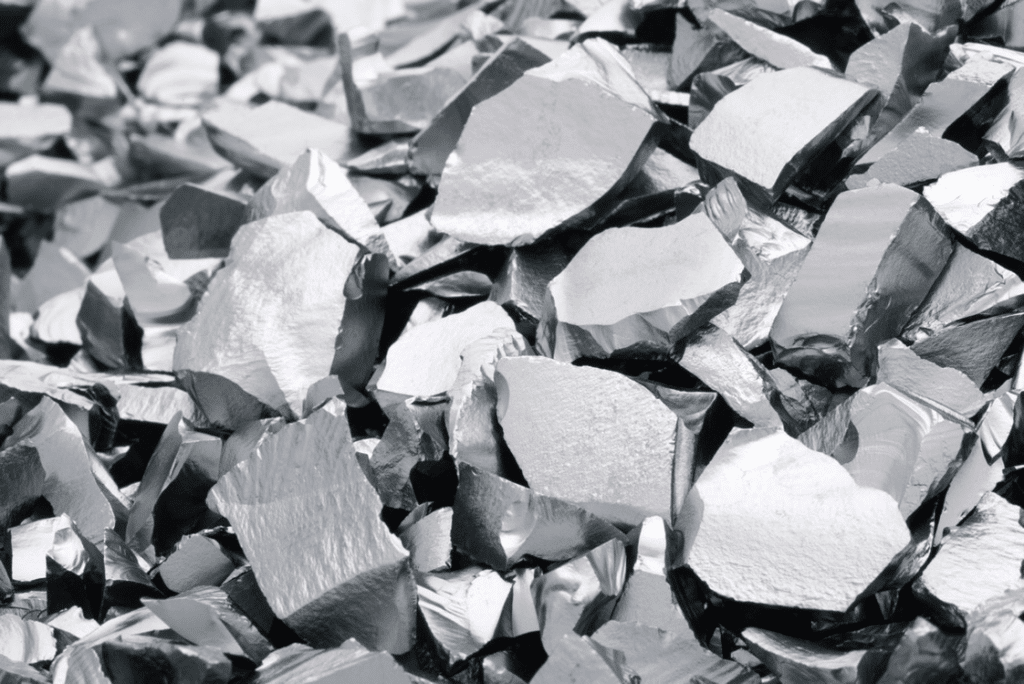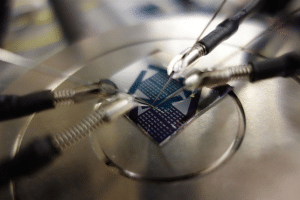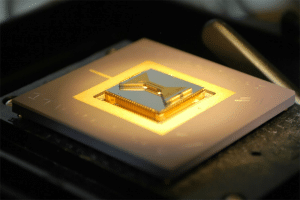
Polycrystalline Silicon Thin Films丨Effects of Stress on Thin Films

When a film is attached to a substrate, the length of the film will change if it is subjected to some kind of film stress source force. Film stresses are usually categorized as Tensilestress and Compressive stress. When there is a force to make the length of the film longer, it is subjected to the stress for the tensile stress, under the conditions of force equilibrium, at this time, the substrate will be relatively subjected to compressive stress, which will cause the substrate and film will be bent inward that is the formation of concave; Conversely, when there is a force to make the film shorter in length, the film subjected to the stress for the compressive stress, which will make the substrate and the film bending downward that is the formation of a convex surface. In the case of excessive stress, it is easy to cause film rupture or fall off from the substrate.
What is film stress
The size of the residual stress of the film and film materials, substrate materials, preparation methods are related to the type of total stress caused by the film is generally divided into two categories: external stress (externalstress) and internal stress: (intermal stress), internal stress: can be divided into thermal stress and intrinsic stress.
The mechanism of film stress generation is as follows.
1, thermal stress: in the manufacturing process, the film and the substrate at the same time through the high-temperature process and at the end of the process at the same time back to room temperature, there is a temperature difference between this process and because of the film and the coefficient of thermal expansion between the substrate is different, so it will result in thermal stress. When the coefficient of thermal expansion of the substrate is larger than that of the film, tensile stress is generated; conversely, compressive stress is generated.
2, intrinsic stress: due to differences in material properties at the interface between the film and the substrate, as well as the microstructure of the film growth process itself caused by the internal stress is called intrinsic stress. This stress has a great relationship with the process of preparing the film and the preparation method, and is closely related to the substrate material, such as the substrate and the film contact interface between the lattice mismatch or the film in the growth of internal defects in the movement of various defects, etc.. It is strongly dependent on the deposition conditions, annealing, heterogeneity, etc.
3, external stress: the stress caused by external forces applied to the film. It is difficult to avoid not introducing residual stresses during the preparation of the film. Since no external load is applied, the external stress is zero.
Thin Film Growth Patterns
There are roughly three models for the growth of thin films deposited on substrates:layer structure, layer length plus island structure, and island structure. These three character growth modes are mainly distinguished by the surface free energy per unit area and the difference in lattice between the substrate and the film.
1、Layer structure: the lattice difference between the film and the substrate material is small, or the lattice constant between them is very close, so the reactant molecules are bound to the substrate by the binding force than other intermolecular bonding force is stronger, so the crystal will be two-dimensional planar layer structure mode to grow, and the sum of the free energy between the film and the interface will be smaller than the free energy of the substrate.
2、Layer plus island structure:The lattice difference between the film and the substrate material is slightly larger than that of the layer structure. In the early stage of growth, the crystal will still grow in a two-dimensional planar structure mode, called such a plane for the wetting surface. When this planar structure exceeds the thickness of the interface, in order to release the accumulated stress from the substrate, it will automatically polymerize to form an island-like structure, and the sum of the free energies between the film and the interface is not necessarily larger or smaller than that of the substrate.
3, island structure: the lattice difference between the film and the substrate material is greater than the other two modes, so the molecular growth is subject to other intermolecular bonding force than the substrate binding force is much larger, the crystal will be directly to the three-dimensional island structure mode to grow in order to release the excessive stress, and the film and the interface between the sum of the free energy will be greater than the substrate's free energy.
Unless there is a chemical bond created between dissimilar molecules, most dissimilar molecules will have less attraction to each other than to their own kind. The bonding force between deposited atoms or between deposited molecules is larger than that of the substrate, most of the films grown on the surface at the beginning of the growth of three-dimensional island-like structure, between the islands is still the surface of the substrate, the more nucleation centers on the surface, the higher the density, the thinner the surface will be more flat, the continuous deposition of the island's height and area increase, and the island to produce a merger, and finally the entire substrate covered. However, this growth mechanism is accompanied by a large residual internal stress, and the LPCVD method of preparing polycrystalline silicon thin films is of this type.
We offer Chemical Vapor Deposition (CVD) OEM Customization Services, Feel free to leave a message to inquire.
Variation of refractive index and absorption coefficient of amorphous silicon at different wavelengths
Variation of refractive index and absorption coefficient of amorphous silicon at different wavelengths In the study of the
Chemical Vapor Deposition (CVD) Classification, Characteristics, and Applications
Chemical Vapor Deposition (CVD) Classification, Characteristics, and Applications Chemical Vapor
Magnetron sputtering丨understanding the principle, classification and advantages
What is magnetron sputtering? Magnetron sputtering is a commonly used method of PVD thin film production.



.jpg)